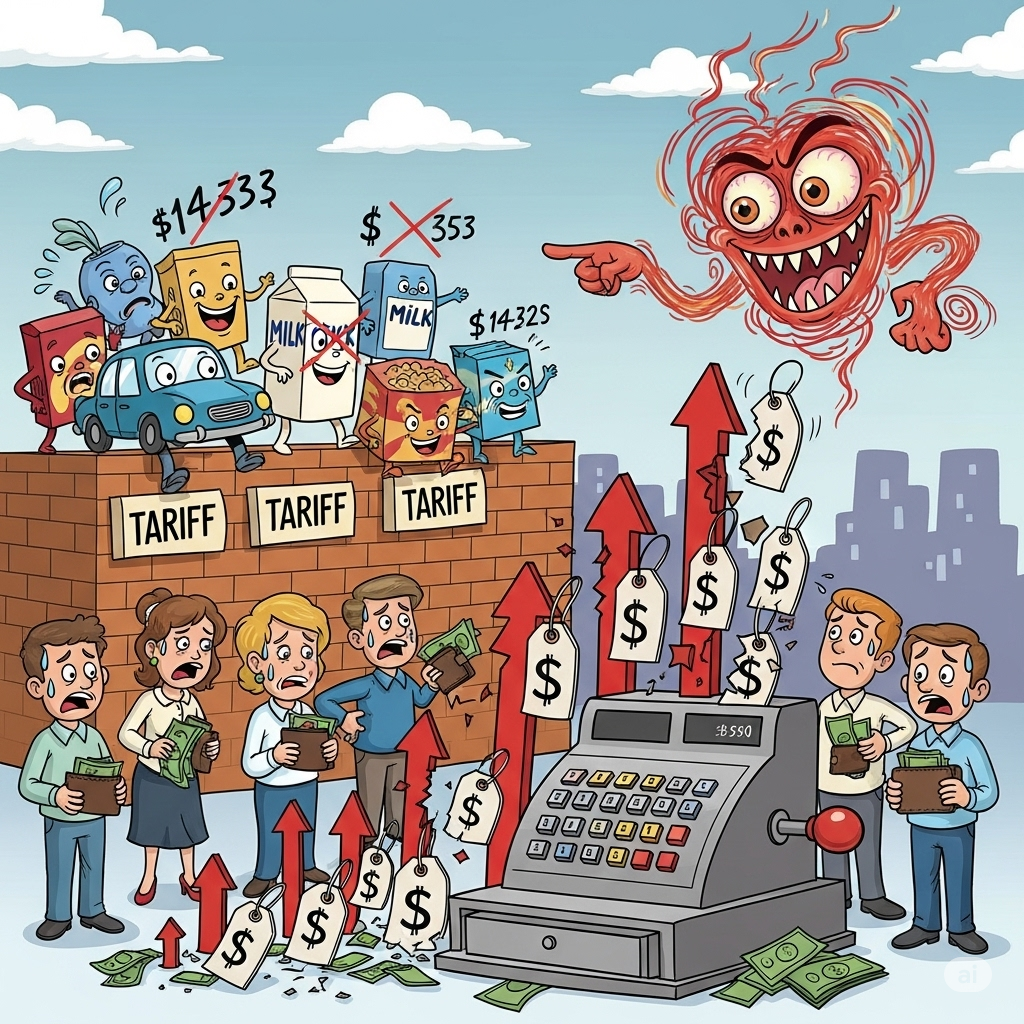Tariffs and inflation. Here they come
United States – For Americans across the nation, the pinch in our wallets is becoming undeniable. While President Trump once campaigned on being a master negotiator who would bring down costs, the reality on the ground tells a different story: his administration’s aggressive tariff policies are increasingly looking like a direct contributor to rising inflation. Let’s look at the hard numbers.
The Rising Cost of Doing Business: A Tariff Tally
Just this past June, we saw a noticeable jump in the U.S. inflation rate. While various factors contribute to price fluctuations, economists are pointing a finger squarely at the escalating tariffs on imported goods. Remember those promises that foreign countries would foot the bill? Turns out, American consumers are the ones reaching deeper into their pockets.
Consider this: the overall average effective U.S. tariff rate has skyrocketed this year, leaping from around 2.5% at the beginning of 2025 to an estimated 17.5% as of late July. Some new tariffs on Chinese goods reached as high as 135% at their peak, and recent trade deals, such as with the European Union, are imposing 15% tariffs on most European goods. That’s a massive increase in the cost of bringing goods into our country. And where do you think those added costs end up? Increasingly, they’re being passed directly to us when we buy clothing, electronics, and even our morning coffee.
Consumers Feel the Pinch: Beyond the Headlines
The Labor Department itself has noted that consumers are starting to feel the impact of these new import taxes. Businesses, initially hesitant to scare away customers with higher prices, are now reporting that they have little choice but to pass on at least a portion of their increased costs. A recent survey by the Atlanta Federal Reserve indicated that companies, on average, expect to pass on half of their tariff costs to U.S. consumers.
And it’s not just goods directly imported that are affected. Many American manufacturers rely on imported components for their own products. New analyses suggest that Trump’s tariffs could squeeze U.S. factories and boost their costs by anywhere from 2% to 4.5%. This ripple effect means even domestically produced items could see price hikes, further contributing to the inflationary pressure. Specific sectors like clothing and textiles are projected to see significant price increases, with shoe prices potentially 39% higher and apparel prices 37% higher in the short term. Even food prices are expected to rise by 3.4% in the short run.
The “Deal Maker” Narrative vs. Economic Reality
The administration’s narrative has consistently been that tariffs would be a boon, generating revenue and creating American jobs without raising prices. Yet, the evidence mounts that this isn’t the case. Instead, businesses are facing an “incredible administrative burden” as they try to navigate constantly shifting tariff rates and reconfigure their supply chains. This uncertainty and added cost ultimately get baked into the prices we pay. The Budget Lab at Yale University estimates that households could face an average annual income loss of $2,400 in 2025 due to these tariffs.
It’s a far cry from the “great deals” we were promised. President Trump campaigned on his ability to negotiate favorable trade agreements that would benefit American workers and lower costs. However, the reality is that his administration’s trade policies are starting to look like one bad deal after another, leading to higher prices for everyday Americans nationwide.
As President Trump campaigns, often touting his business acumen and promising to lower costs, it’s crucial to remember the track record. The numbers don’t lie: tariffs are contributing to inflation, and the “great deal maker” appears to be orchestrating a trade environment where American consumers are increasingly footing the bill.


